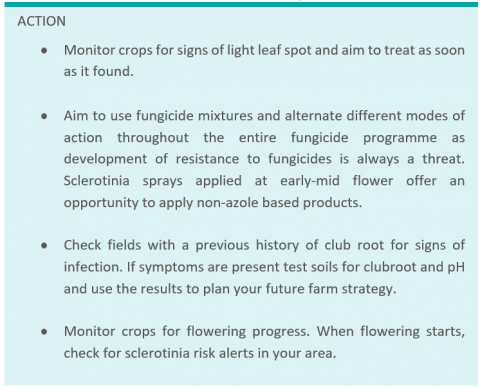Phil Walker
Disease in Oilseed Rape
The focus for disease control is now light leaf spot and sclerotinia as crops come into flower.
Light leaf spot continues to be reported in untreated trials plots and field crops across the country. At trial sites incidences have ranged from 10% to 100% depending on location, and individual leaf severities (area of leaf affected) range from 0.5 to 2%. Recent mild weather and frequent rain showers will facilitate the spread of light leaf spot spores up the leaf canopy and the disease can cause significant yield losses where infection is seen on the flowering buds.
Generally, symptoms of light leaf spot are visible in the field before incubation with distinctive white spore droplets seen on leaves and sometimes accompanied with leaf distortion (Figure 1). Further symptoms include the development of mealy blotches with a pinkish white centre and spore droplets around the edge of the lesion. In many cases spring fungicides have been applied to crops at stem extension. In heavily infested crops, a good strategy when selecting fungicides targeted at sclerotinia is to select flowering spray products which also have activity against light leaf spot to protect the pods from infection.
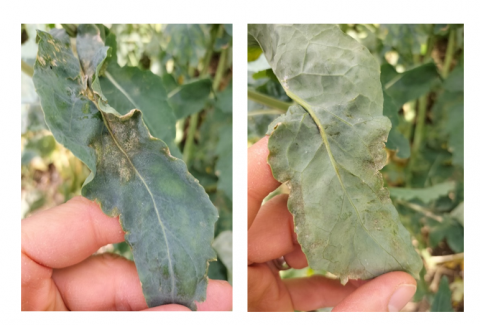
Figure 1. Typical light leaf spot infection with associated lesions, sporulation, and leaf distortion, as recently seen from trial plots in Cambridgeshire, with symptoms on the upper (left) and underside of the leaf (right). Source: ADAS.
There have been some reports of clubroot symptoms in fields with a known history of the disease but generally severities have been lower than previous seasons due to the increasing use of clubroot resistant varieties and extended rotations in high-risk fields. Clubroot resistant varieties can still develop symptoms and should still be checked for signs of infection. Pull plants regularly and inspect the root system for signs of galls, which are usually solid, white and irregular in shape. Clubroot spore germination is sensitive to temperature and usually requires soil temperatures of above 16oC, therefore crops can become at risk into the spring even if symptoms have not been seen over the winter.
Reports of oilseed rape growth stages have varied across the country, with some crops still at the yellow bud stage but the most forward now approaching mid-flowering (Figure 2). The highest-risk time for sclerotinia infection is most often at about mid-flower when petal fall begins. However, analysis of past years data shows that infection during early-flower does occur if the weather is sufficiently mild and humid, and spore inoculum is present.
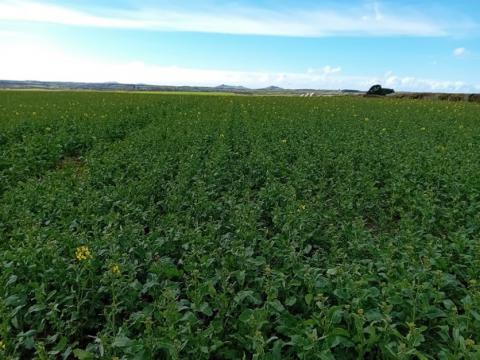
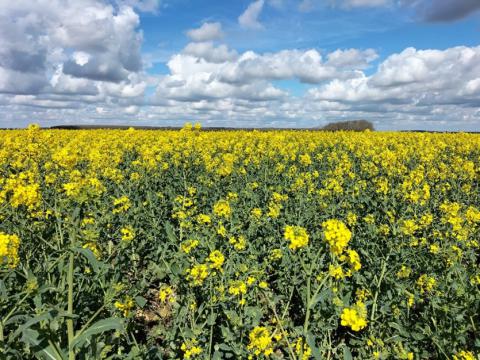
Figure 2. Oilseed rape crop in Pembrokeshire at yellow bud to early flowering (top) compared to crop in Cambridgeshire currently at mid flower (bottom). Source: ADAS.
AHDB weather-based infection alerts for this season can be found via the link https://ahdb.org.uk/sclerotinia-infection-risk-alerts-for-oilseed-rape. This shows forecasts for the next 48 hours for temperature and humidity conditions which promote sclerotinia infection and are available for multiple locations across the UK. The thresholds for an alert are temperatures >7oC and humidity > 80%, for 23 or more consecutive hours. A simple indicator of likely alerts is the occurrence of mild nights when temperatures do not drop below 7oC. At present, a few coastal areas of England and Wales are showing as high risk, where the temperatures are above threshold and the humidity is likely aided by sea mists (Figure 3). For the rest of the UK the risk of infection is still low as humidity or overnight temperatures remain below threshold. For crops in areas of high risk, the timing of spray applications will depend on the flowering progress of oilseed rape crops, risk of sclerotinia infection from previous history of the field and the presence of spore inoculum. Spore monitoring data from AHDB shows there is a very low presence of airborne inoculum present, however, the combination of rain and milder temperatures is likely to stimulate further germination of sclerotia which will result in spore release.
Monitoring the risk of infection risk will help decide on whether a fungicide treatment is justified at early to mid-flower. It may be that treatment can be delayed safely until mid-flower or even beyond, aiming to provide a window of protection long enough to avoid any need for a decision on a second treatment. With flowering starting earlier than in previous seasons and depending on the air temperatures over April, there could be an extended flowering period this season so the requirement for a later flowering fungicide timing may have to be considered. Fungicides targeted for sclerotinia must be applied as protectants ahead of infection.
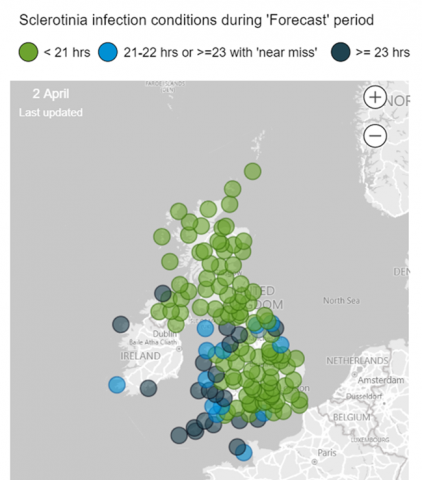
Figure 3. AHDB weather-based alerts, Wednesday 3 April, indicating all sites high and low risk for Sclerotinia infection risk in oilseed rape. https://ahdb.org.uk/sclerotinia-infection-risk-alerts-for-oilseed-rape
